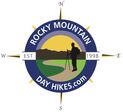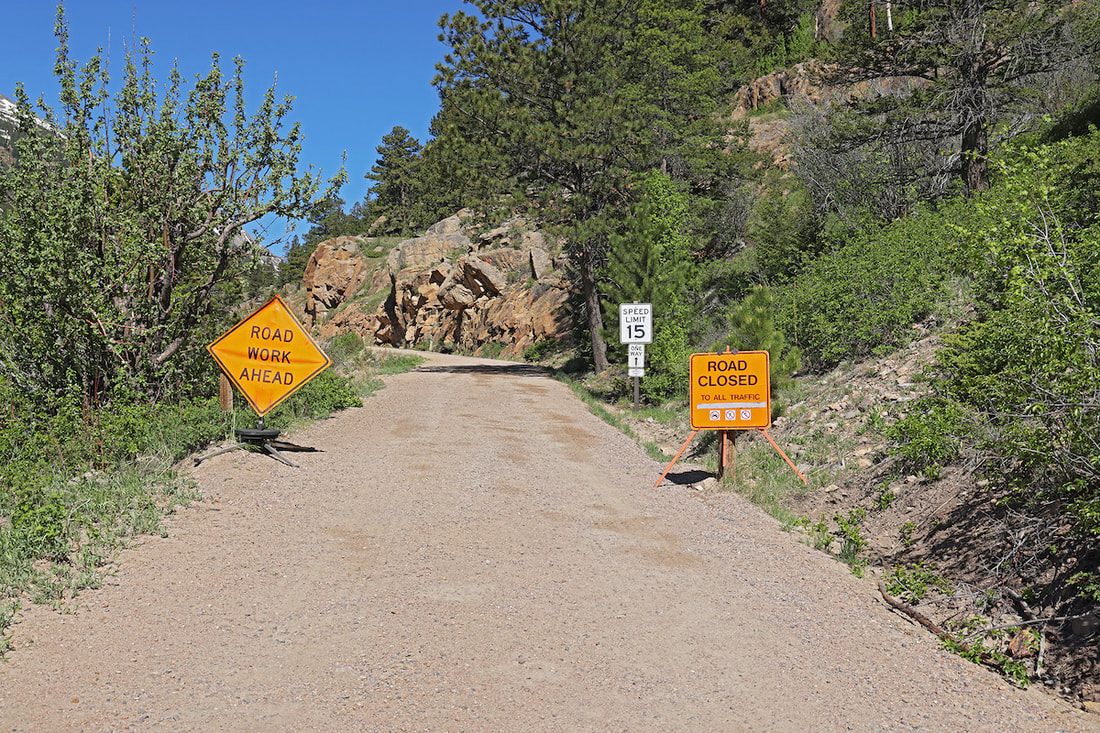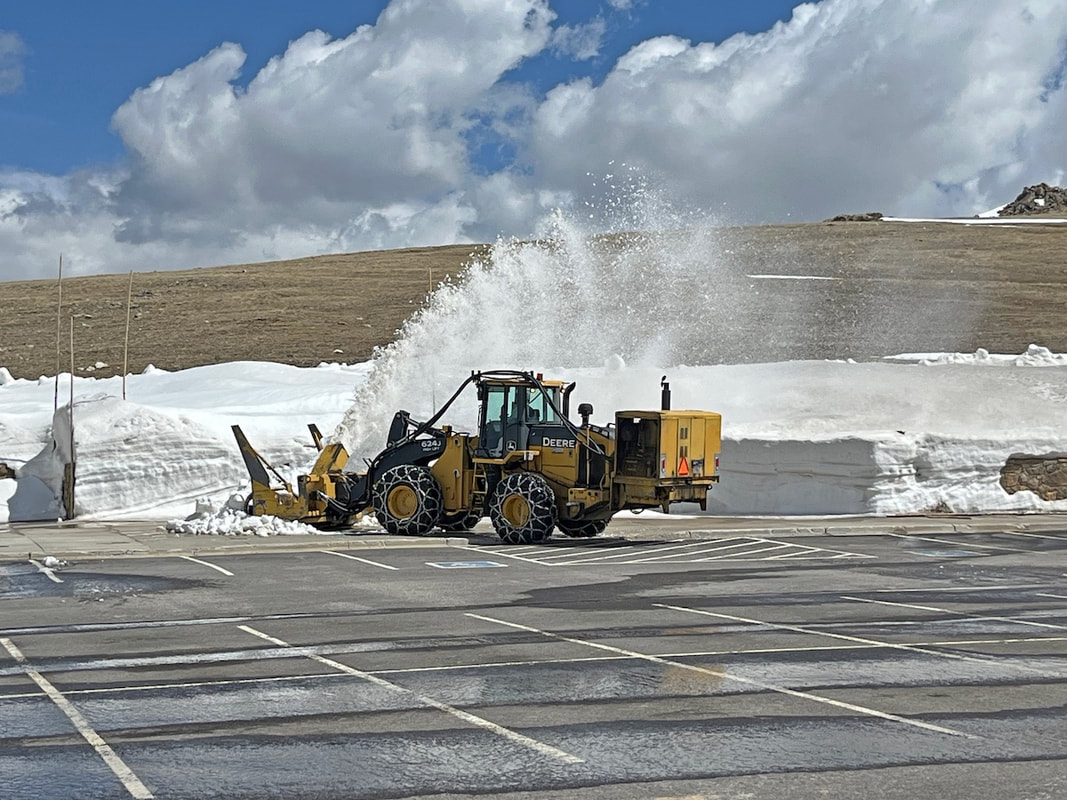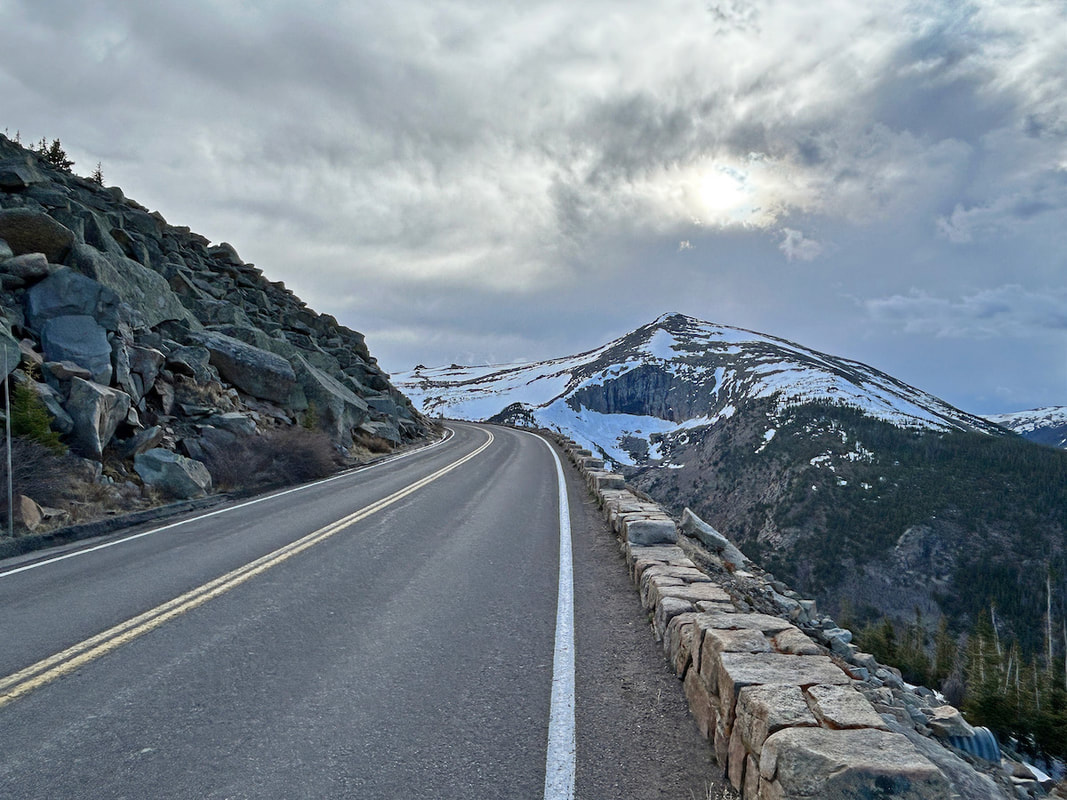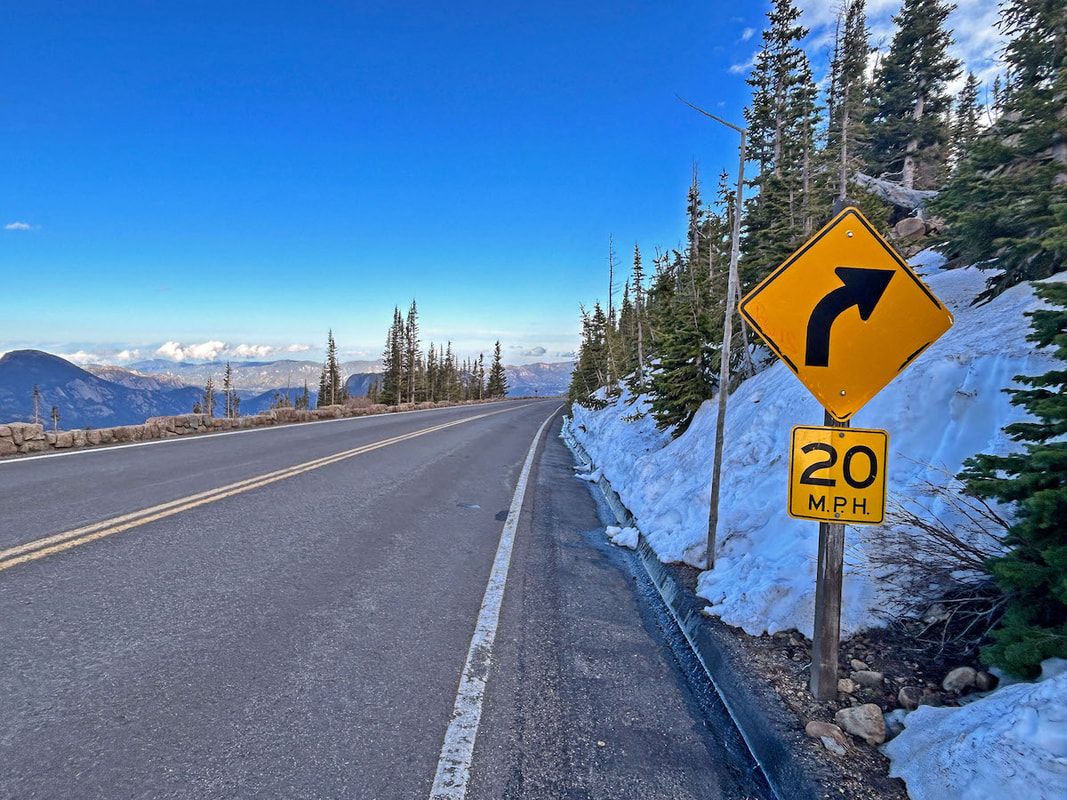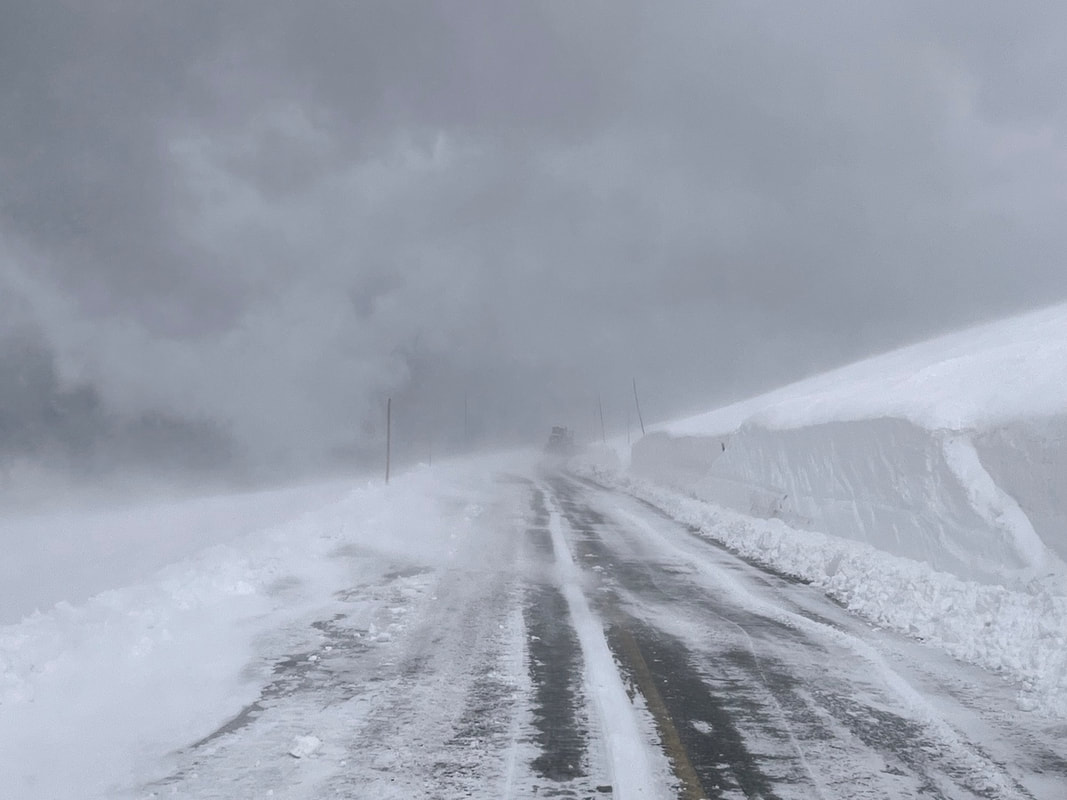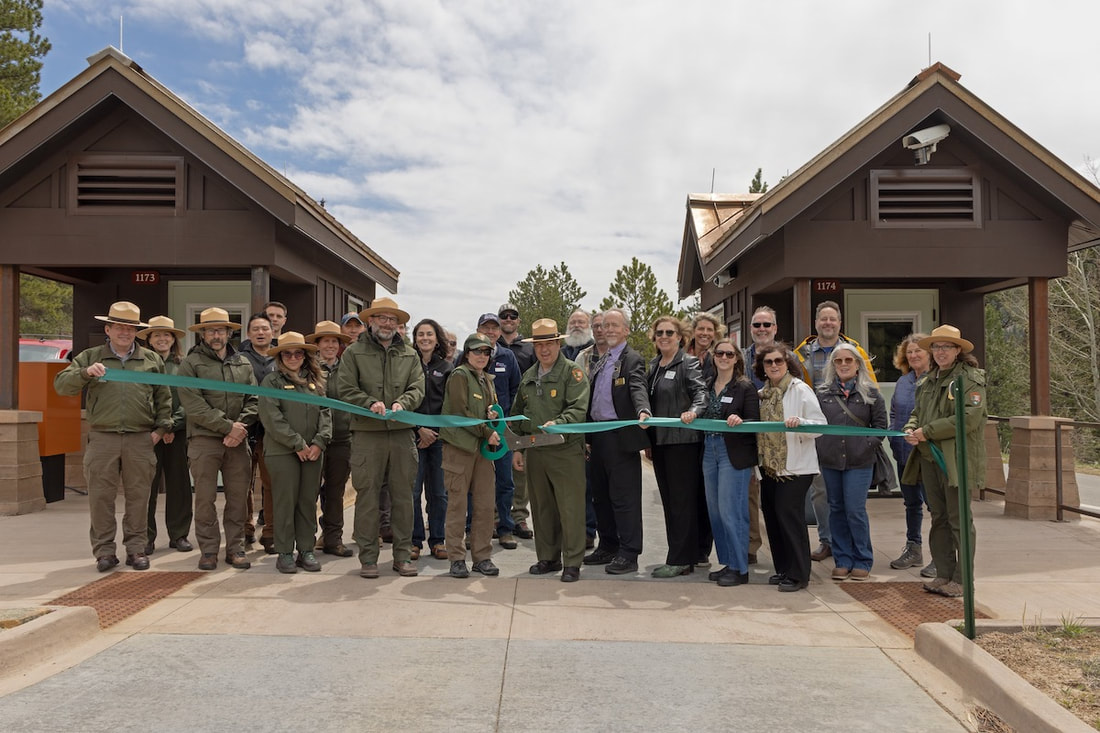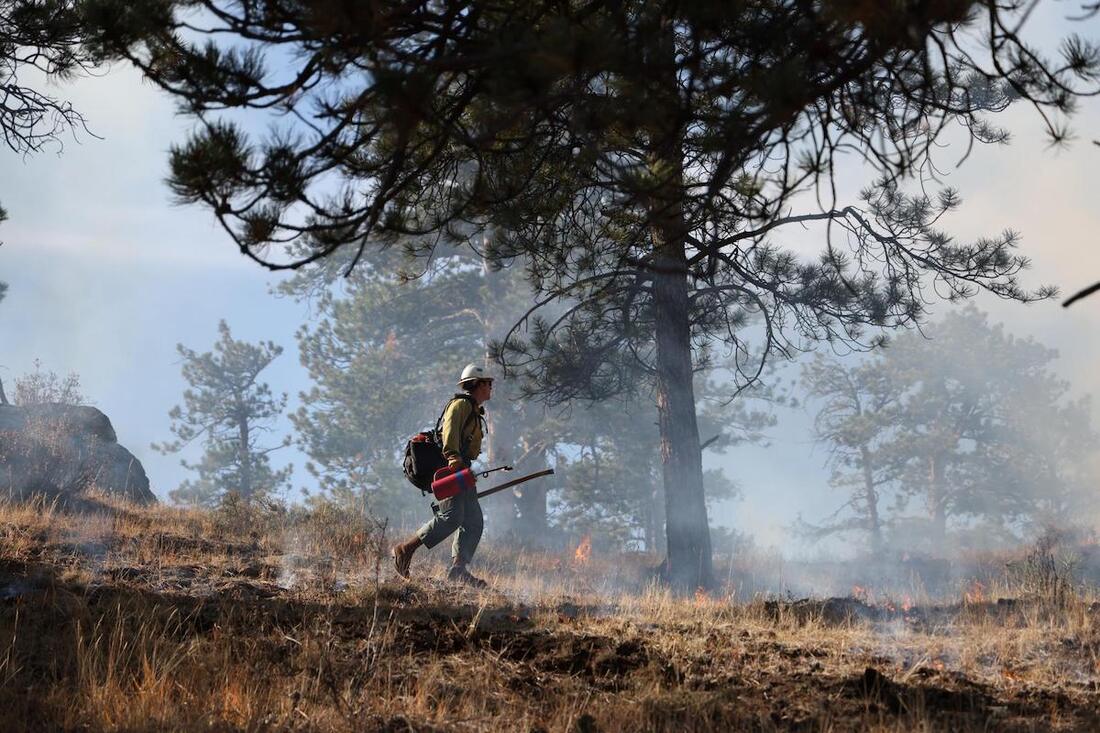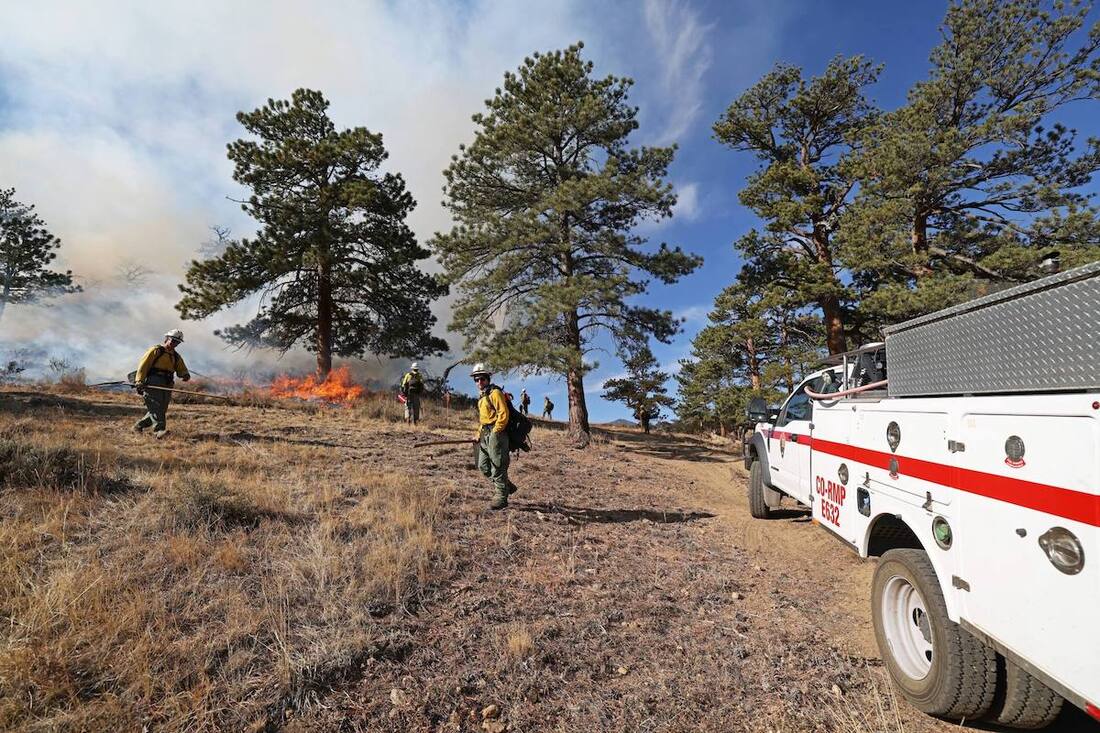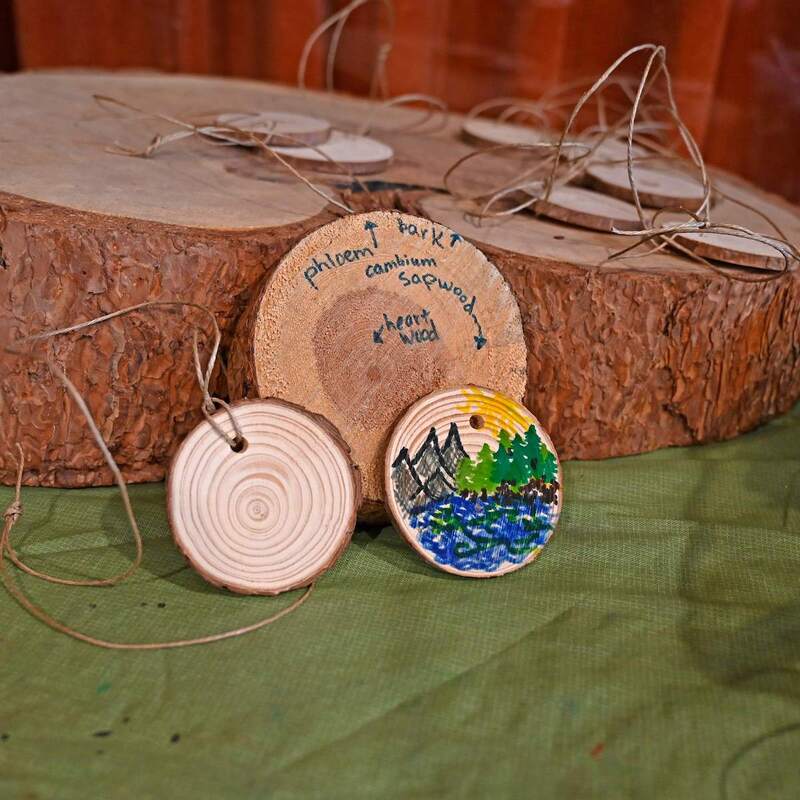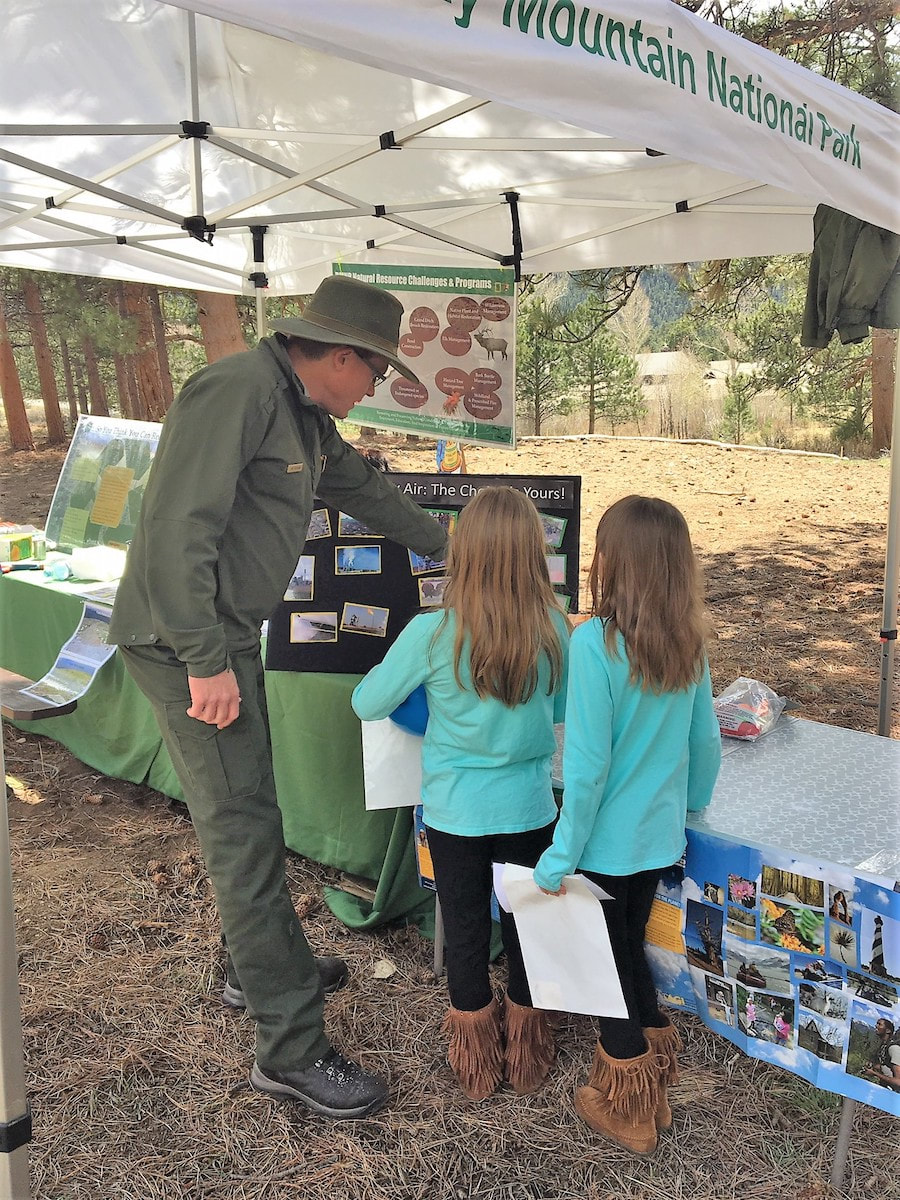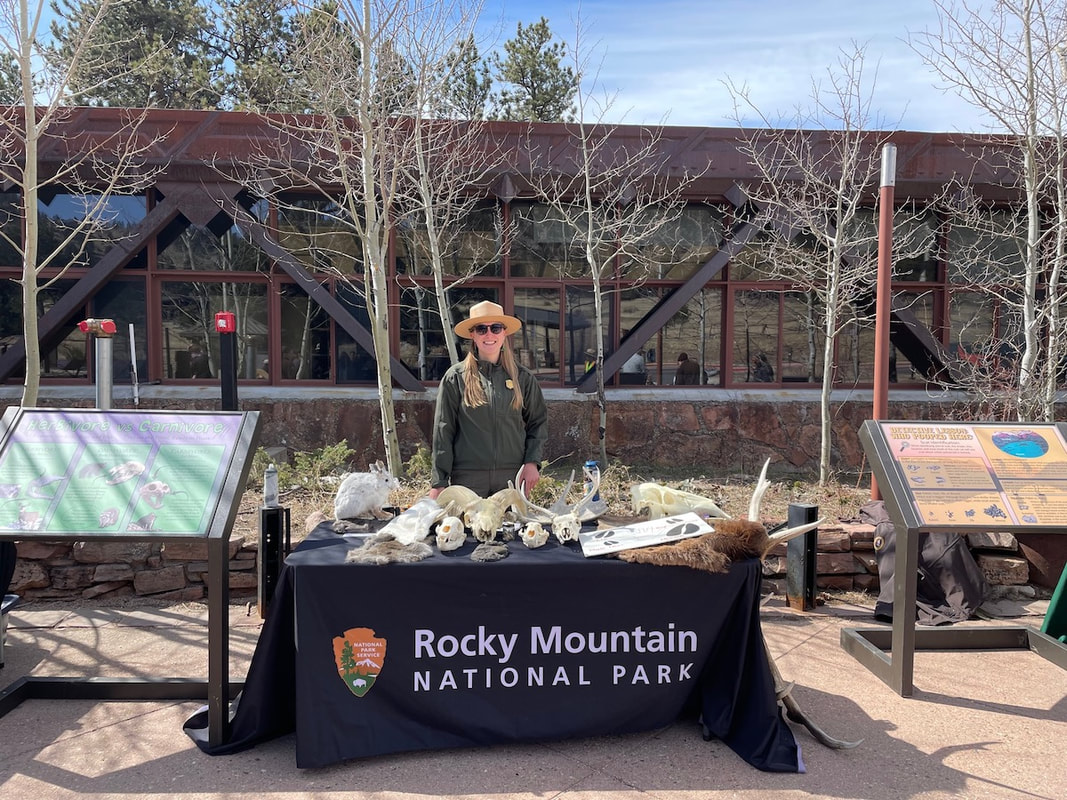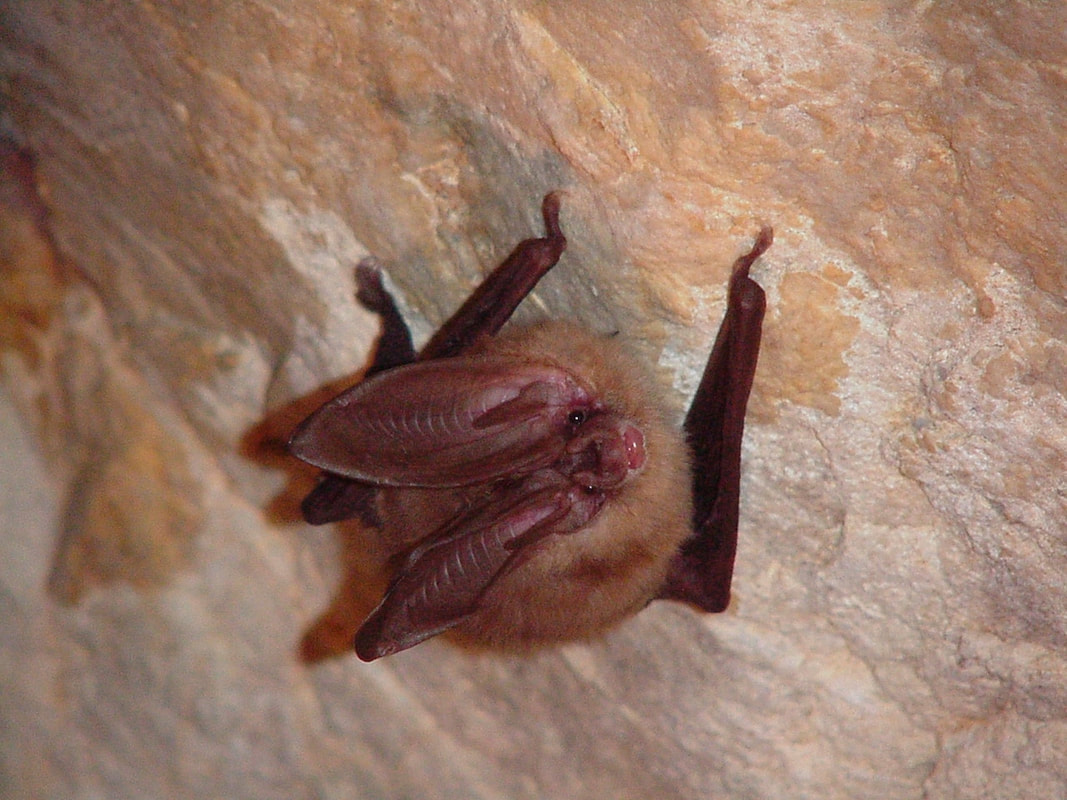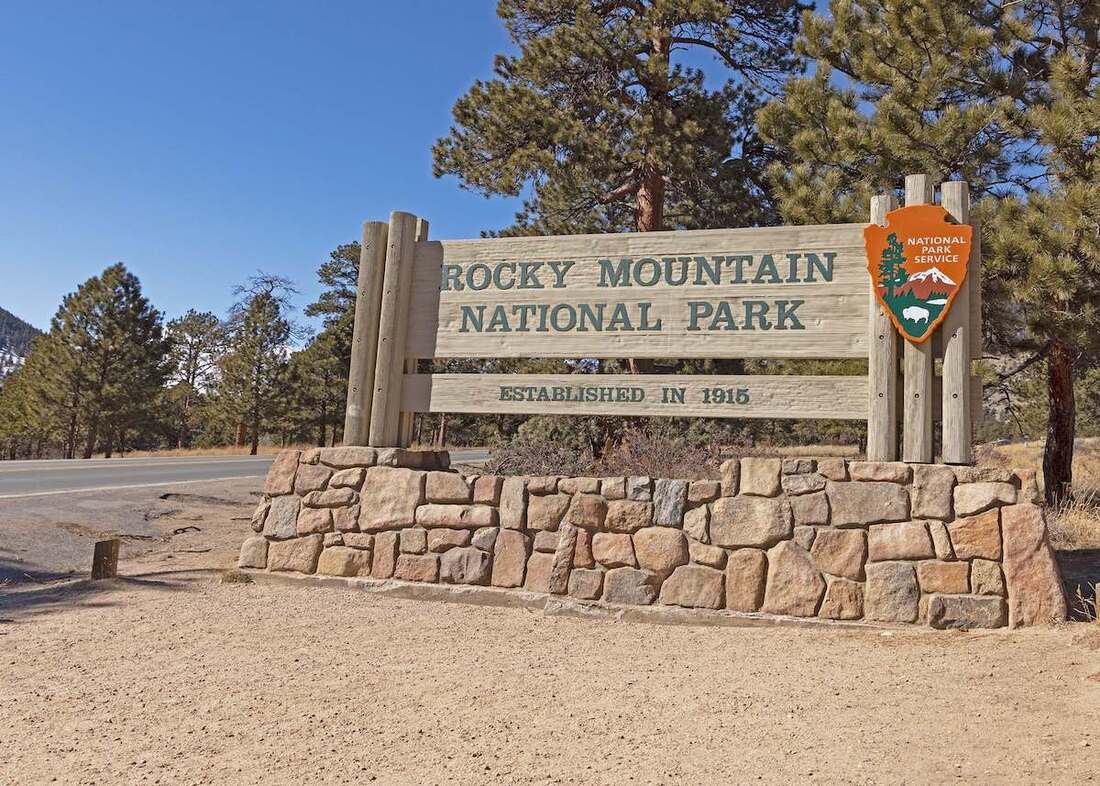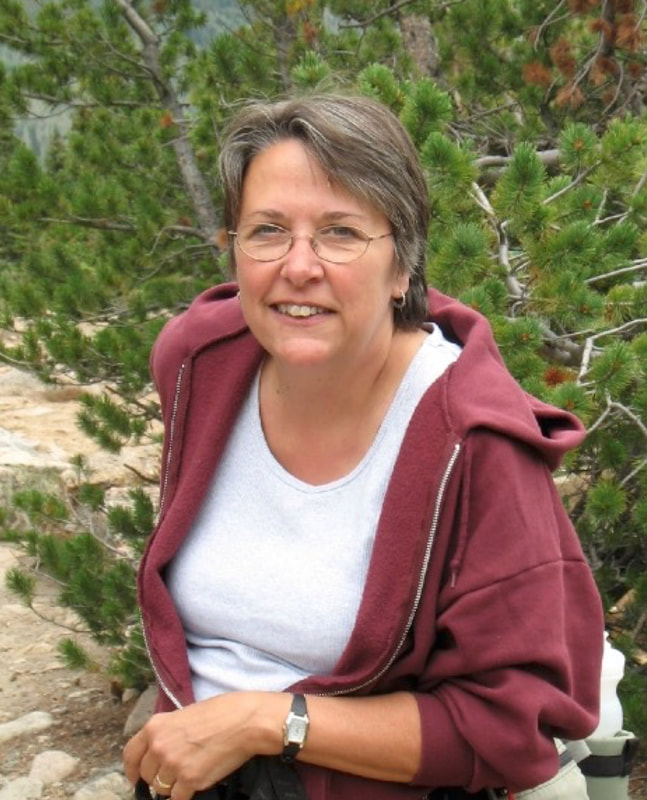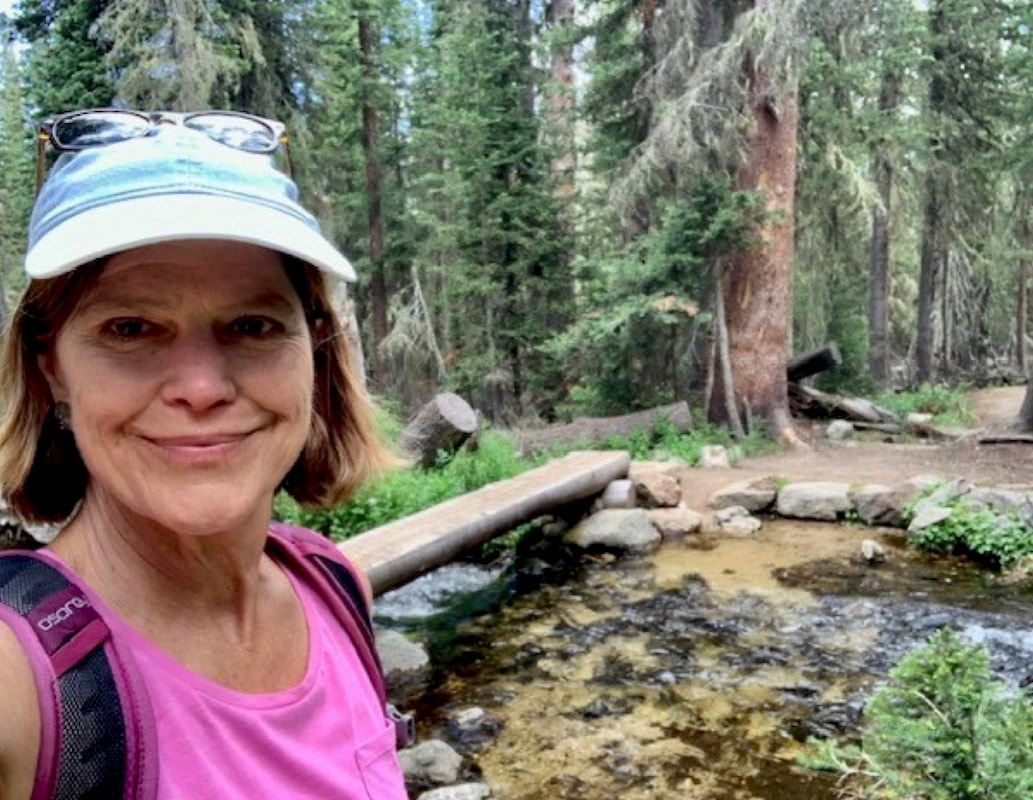|
Spring snowplowing operations and road maintenance is now underway on Old Fall River Road, located on the east side of Rocky Mountain National Park. The road is closed to all uses (including pedestrians, people walking dogs on leash, and cyclists) Tuesdays through Fridays between the hours of 6 a.m. to 4:30 p.m.
This closure is expected to remain in place through the month of June. The road normally opens to vehicles in late June/early July. While spring opening operations are underway, Old Fall River Road is open to pedestrians, people walking dogs on leash and cyclists on Saturdays, Sundays, and Mondays; the road is also open to these users Tuesdays through Fridays after 4:30 p.m. All users must adhere to posted road closure signs. Violators will be cited. Parking in front of the access gate to Old Fall River Road is prohibited. Park vehicles will be entering and exiting Old Fall River Road throughout the day. Any vehicles that block road access will be towed and cited.
0 Comments
Trail Ridge Road in Rocky Mountain National Park is open for the season. Due to melting snow on the road and the potential for freezing temperatures visitors should be prepared for icy conditions. At this time, nightly closures will not be implemented. However, because weather conditions may change rapidly at higher elevations, park visitors should be prepared to adjust travel plans accordingly at any time and are encouraged to call the park’s Trail Ridge Road recorded status phone line at (970) 586-1222. Park staff will update the recorded line when/if the road status changes. Alpine Visitor Center and Trail Ridge Store are currently closed to all uses. Visitors must adhere to any barricades. Visitors entering any closure areas will be cited. Trail Ridge Road historically opens in late May; last year the road opened on May 31. The earliest the road has opened was on May 7, 2002; the latest June 26, 1943. Trail Ridge Road is the highest continuous paved road in the United States, climbs to 12,183 feet and connects the towns of Estes Park and Grand Lake. Trail Ridge Road officially closed for the season last year on October 18. National Park Service plow operators began clearing the snow in the middle of April. Crews from the west side of the park and crews from the east side of the park move along the road and eventually meet at the Alpine Visitor Center. The visitor center is the highest in the National Park Service, sitting at 11,796 feet above sea level. Spring storms often impact plowing activities. This year, May storms with significant winds at higher elevations hampered snow plowing operations this year. Plow operators have encountered additional snow accumulation, significant wind resulting in deep snow drifts, freezing cold temperatures and ice. Timed Entry Reservations In Place Rocky Mountain National Park has a timed entry reservation system in place during certain times of day. There are two types of reservations available. One option is for the Bear Lake Road Corridor, which includes the entire corridor and rest of the park. This reservation period is from 5 a.m. to 6 p.m. Another timed-entry option is for the rest of Rocky Mountain National Park, excluding the Bear Lake Road corridor, and includes Trail Ridge Road. This reservation period is from 9 a.m. to 2 p.m. Permits issued using the reservation system will allow park visitors to enter the park within two-hour windows of availability. The reservation system will apply to all areas of the park. To learn more visit http://go.nps.gov/romo/timedentry Trail Ridge Road is not anticipated to open over the Memorial Day Holiday weekend. Over the last week, RMNP snowplow operators have faced setbacks from previous progress. Wind has been the main challenge since last week, causing low visibility, snow drifting back over cleared areas, and a thick ice layer beneath drifted snow. Snow and overnight freezing temperatures are forecast above 10,000 feet in Rocky Mountain National Park over the weekend. Today, National Park Service staff were joined by elected officials, congressional staff, project contractors, the Rocky Mountain Conservancy, and other special guests to celebrate the completion of the Fall River Entrance Station construction project.
The project included three new entrance kiosks, a new office, an updated entrance sign, a dedicated transponder lane, and road widening. It also involved major improvements to utility systems: the wastewater and water systems serving the Fall River Entrance and the Bighorn Ranger Station were upgraded or replaced. A new on-site wastewater treatment system was installed, several water system components were modernized, and the water treatment building saw significant upgrades. This project addresses aging infrastructure as part of a broader effort across national parks to reduce the agency's maintenance backlog. Funding came through the National Park Service Line-Item Construction and Repair-Rehabilitation programs, which are authorized by Congress to support critical visitor service investments. More than a decade in the making, this marks the fifth iteration of an entrance station in the Fall River area - a reflection of the park’s continued evolution over its 110-year history. Colorado Parks and Wildlife biologists received a mortality alert for female gray wolf 2514-BC on April 20. The agency, in cooperation with the National Park Service, has confirmed the mortality took place in Rocky Mountain National Park. As a federally listed species under the Endangered Species Act, the U.S. Fish and Wildlife Service is investigating. A final determination of the cause of death will not be made until the investigation is completed, including the necropsy, a foundational component of the overall investigation process. 2514-BC was part of the group of wolves translocated to Colorado from British Columbia. No additional details are available at this time.
Wolf survival in Colorado is within normal margins for a wolf population in the Rocky Mountains. Any reintroduction effort includes eventual mortality levels and these were incorporated into the Colorado Wolf Restoration and Management Plan. Mortality is a factor that plays a role in all natural populations. The average lifespan of a gray wolf in the Rocky Mountains is generally 3-4 years. Based upon the potential for favorable weather and conditions, fire managers at Rocky Mountain National Park are planning to conduct a prescribed burn on Tuesday, April 15, 2025. Firefighters plan to burn approximately 60 acres of the 334-acre Headquarters Unit. This burn unit is located inside Rocky Mountain National Park, west of Beaver Meadows Visitor Center and south of U.S. Highway 36. Because of the fuel type that will be burned, which includes mainly grasses and small shrubs, heavy and prolonged smoke is not expected from this operation. Due to the proximity of burn operations near the road, U.S. Highway 36 inside Rocky Mountain National Park will be temporarily closed from just west of Beaver Meadows Visitor Center to the Beaver Meadows Entrance between the hours of 10 a.m. and 2 p.m. During this time, visitors will need to enter and exit the park through the Fall River Entrance on US 34. Beaver Meadows Visitor Center, RMNP’s Wilderness Office and the Rocky Mountain Conservancy Nature Store, located inside the visitor center, will be open as regularly scheduled. The primary goal of the project is to reduce the threat of wildland fire to adjacent communities and NPS infrastructure by using prescribed fire to reduce the amount of fuels available in this area. When fighting the East Troublesome Fire in 2020 and the Fern Lake Fire in 2012, firefighters were able to take advantage of previous and existing prescribed fire and hazardous fuels treatment areas that provided a buffer between the fire and the town of Estes Park. Prior hazard fuels projects were instrumental in stopping the fire from jumping Bear Lake Road and Trail Ridge Road. If conditions are favorable, ignitions are planned to occur on Tuesday, April 15. Firefighters will be on scene for the duration of the operation and will be patrolling the burned area. Smoke from the prescribed burn will be visible throughout the day of the burn, mostly during the warmest part of the day. With cooler temperatures in the evening, smoke may linger and accumulate in low-lying areas. Additional information will be shared on InciWeb at https://inciweb.wildfire.gov/incident-information/cormp-front-country-prescribed-fire, on www.nps.gov/romo and on Rocky Mountain National Park’s official social media channels. Follow us on Facebook, Instagram, and X @RockyNPS. Smoke may be visible both inside and outside the park. Every effort will be made to minimize smoke impacts on visitors and the adjacent community; however, some smoke is anticipated to disperse east of the park. Smoke may affect your health: For more information see https://www.colorado.gov/pacific/cdphe/wood-smoke-and-health. No trail or road closures are anticipated but visitors passing through active burning areas may be escorted by fire personnel to ensure their safety. Safety factors, weather conditions, air quality, personnel availability and environmental regulations are continually monitored as a part of any fire management operation. For more information, please contact the park’s Information Office at (970) 586-1206. Celebrate National Park Week, National Volunteer Week, Earth Day, and National Junior Ranger Day at Rocky Mountain National Park. What is National Park Week? This is a week-long celebration of our national parks that takes place annually in the month of April. This year, National Park Week begins on Saturday, April 19 and continues through Sunday, April 27, 2025. Rocky Mountain National Park will be celebrating in person and online. On Saturday, April 19: National Park Week kicks off with a fee free day. All park entrance fees will be waived on this date. Camping, overnight wilderness backpacking, and all other administrative fees remain in effect. Join us at Rocky’s Earth Day & National Junior Ranger Day Events!
Additional park ranger-led programs and activities will be happening all week long! On Sunday, April 20: Join us on the east side of RMNP at Beaver Meadows Visitor Center at 2 p.m. for the program “Efforts to Restore Boreal Toad Populations in RMNP,” presented by Jonathan Lewis, Conservation Biology Program Manager for Rocky Mountain National Park. This special program is the final presentation in Rocky Mountain National Park and Rocky Mountain Conservancy’s 2025 Winter Speaker Series. To learn more, visithttps://rmconservancy.org/ For RMNP’s full National Park Week program schedule, visit the park’s webpage at https://go.nps.gov/romo/npweek Unable to visit in person? Join Rocky’s digital celebration! Visit our webpage and check out RMNP’s page on the NPS App. Follow us @RockyNPS on Facebook, Instagram, and Twitter. We’ll be sharing fun and interesting facts and stories related to this year’s program theme “Your National Park Playlist.” To learn more about Rocky Mountain National Park and to plan for your next trip, visit our website atwww.nps.gov/romo, download the NPS App, or call the park’s Information Office at (970) 586-1206.
Pd is an invasive fungus that causes white-nose syndrome (WNS), a fatal disease that impacts bats. This fungus can spread rapidly, primarily through bat-to-bat contact.
WNS does not cause illness in humans, but humans are able to spread the fungus to new places. To protect yourselves and conserve bat populations, we recommend visitors: Report dead/injured bats to park personnel. To protect yourself and bats, never touch or pick up a bat. Although WNS does not cause illness in humans, a small percentage of bats can be infected with other dangerous diseases, such as rabies. Decontaminate. Ensure you properly decontaminate your gear and outerwear after visiting a cave or other bat habitat. Earlier this year, swabs taken from bats in the Holzwarth area of the park found a probability of Pd. Following this probable result, National Park Service wildlife biologists at the park collected bat guano from locations in the Holzwarth Historic Site area for follow up testing to verify the results. The results of these tests have positively detected Pd. Any new detection of Pd is worrisome because bats are vital for healthy ecosystems. Rocky Mountain National Park is home to nine known species of bats, five of which have been found living in areas above 11,000 feet. WNS has been blamed for millions of bat deaths nationwide since its initial detection in New York State in 2006. In July 2022, the first confirmed case of WNS was reported in Southeastern Colorado. Pd and WNS have also been confirmed in Larimer County, Colorado. Colorado Parks and Wildlife and the USGS, along with U.S. Fish and Wildlife Service and National Park Service, have been conducting WNS surveys for over a decade, monitoring bats for presence of Pd. Colorado is home to 19 native bat species, at least 13 of which may be susceptible to this disease. Colorado's native bats are all insect eaters and use various habitat types across the state. They are most active during the summer months and spend the winter either hibernating in underground roosts throughout the state or migrating south. The National Park Service and other state and federal agencies will continue to monitor bats throughout Colorado. To learn more about White Nose Syndrome and how it impacts bats, visit https://www.whitenosesyndrome.org/ During activities within Rocky Mountain National Park on February 17 and March 1, park rangers received reports of a vehicle driving recklessly with disregard for the safety of others.
Rangers are investigating these reports and are seeking information from the public, including any photographs or video material. At this time, no further information will be provided regarding this ongoing investigation. If you have information that could help investigators, please contact us. You don't have to tell us who you are, but please tell us what you know. Please contact the National Park Service Investigative Services Branch Tip Line 888-653-0009, or submit a tip online at go.nps.gov/SubmitATip or Email [email protected] “We’re delighted to add Diane and Darla to the Conservancy leadership team as we look ahead to the financial and operational challenges facing Rocky Mountain National Park and our other public lands,” said Walt Borneman, board president. “Each brings lifelong experience and passion in leading beloved public organizations and serving their constituencies.”
Originally from the state of New York, Goddard graduated from Southern Connecticut State University with a bachelor's degree in economics and earned a master’s degree in business administration from the University of Kansas. She retired from the university in 2020 but advises campus leaders on budget reviews and optimization practices with the National Association of College and University Business Officers. Diane, husband Stephen, and their three children, vacationed in Estes Park and Rocky Mountain National Park every summer for 35 years. Because of their love of Rocky and the many outdoor activities in the park and connection to the Estes Valley, they purchased a home in Estes Park in 2016 where they now live full time and regularly enjoy hosting their lifelong friends. “We enjoy watching our four grandchildren discover all the magic of Rocky Mountain National Park and develop their own deep love of nature as well as the understanding of the need to protect and conserve this amazing natural resource,” said Goddard.
Sidles began her federal career as a Student Conservation Association (SCA) volunteer in the North Cascade mountains in Washington State. She worked summers as a U.S. Forest Service wilderness ranger while obtaining her business degree at the University of Texas at Arlington and then completed graduate school at Western Washington University.
Sidles’ 37-year career spanned numerous national parks and sites across the country including Arches and Zion in Utah; Big Bend in Texas; Denali in Alaska; NPS headquarters in Washington, D.C.; Independence National Historic Park in Philadelphia; Golden Gate National Recreation Area in California; Grand Canyon-Parashant National Monument and Saguaro National Park in Arizona; and, finally, the last seven years at Rocky where her leadership was critical in navigating challenges including the pandemic and historic wildfires. Sidles and her husband reside primarily in Arizona but regularly return to the Rockies where she says, “the park and its communities remain firmly in my heart.” Joining Borneman as returning board president and Goddard as the new treasurer, are Christina Kraft serving as vice president and Rich Fedorchak returning as secretary. In addition to Sidles, other board members are Brian Ross, Greg Danielson, Timothy Davis, Liza Grant, Laurie Mathews, Claudine Perrault, Jim Pickering, Kim Skyelander, and Zachary Wiebe. |
RMNP UpdatesPress Releases from Rocky Mountain National Park and the Rocky Mountain Conservancy.
Archives
September 2025
|
© Copyright 2025 Barefoot Publications, All Rights Reserved
